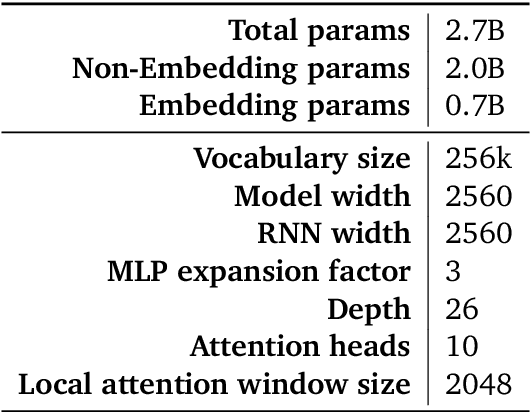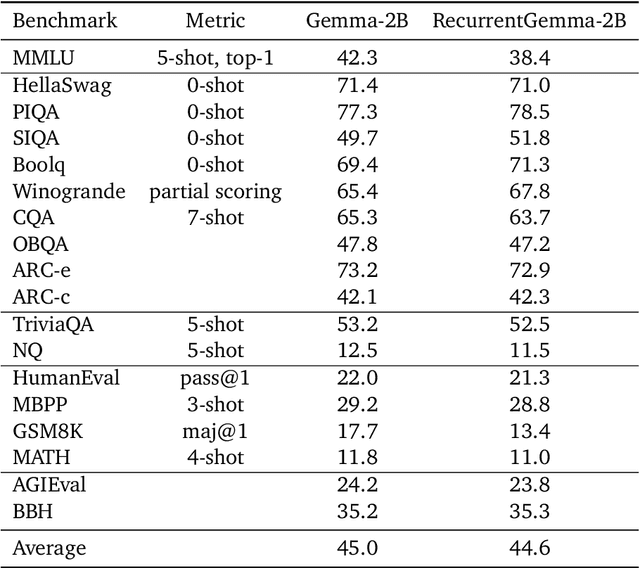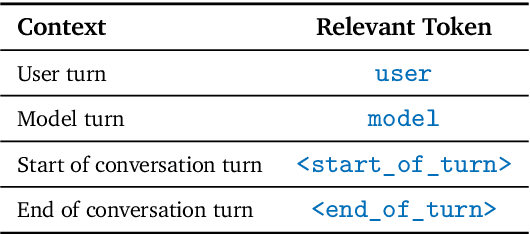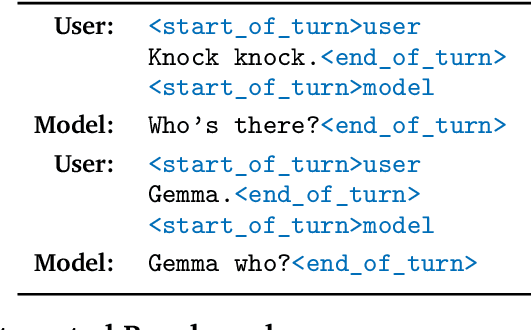Jenny Brennan
Imagen 3
Aug 13, 2024Abstract:We introduce Imagen 3, a latent diffusion model that generates high quality images from text prompts. We describe our quality and responsibility evaluations. Imagen 3 is preferred over other state-of-the-art (SOTA) models at the time of evaluation. In addition, we discuss issues around safety and representation, as well as methods we used to minimize the potential harm of our models.
Holistic Safety and Responsibility Evaluations of Advanced AI Models
Apr 22, 2024Abstract:Safety and responsibility evaluations of advanced AI models are a critical but developing field of research and practice. In the development of Google DeepMind's advanced AI models, we innovated on and applied a broad set of approaches to safety evaluation. In this report, we summarise and share elements of our evolving approach as well as lessons learned for a broad audience. Key lessons learned include: First, theoretical underpinnings and frameworks are invaluable to organise the breadth of risk domains, modalities, forms, metrics, and goals. Second, theory and practice of safety evaluation development each benefit from collaboration to clarify goals, methods and challenges, and facilitate the transfer of insights between different stakeholders and disciplines. Third, similar key methods, lessons, and institutions apply across the range of concerns in responsibility and safety - including established and emerging harms. For this reason it is important that a wide range of actors working on safety evaluation and safety research communities work together to develop, refine and implement novel evaluation approaches and best practices, rather than operating in silos. The report concludes with outlining the clear need to rapidly advance the science of evaluations, to integrate new evaluations into the development and governance of AI, to establish scientifically-grounded norms and standards, and to promote a robust evaluation ecosystem.
RecurrentGemma: Moving Past Transformers for Efficient Open Language Models
Apr 11, 2024



Abstract:We introduce RecurrentGemma, an open language model which uses Google's novel Griffin architecture. Griffin combines linear recurrences with local attention to achieve excellent performance on language. It has a fixed-sized state, which reduces memory use and enables efficient inference on long sequences. We provide a pre-trained model with 2B non-embedding parameters, and an instruction tuned variant. Both models achieve comparable performance to Gemma-2B despite being trained on fewer tokens.
Gemma: Open Models Based on Gemini Research and Technology
Mar 13, 2024



Abstract:This work introduces Gemma, a family of lightweight, state-of-the art open models built from the research and technology used to create Gemini models. Gemma models demonstrate strong performance across academic benchmarks for language understanding, reasoning, and safety. We release two sizes of models (2 billion and 7 billion parameters), and provide both pretrained and fine-tuned checkpoints. Gemma outperforms similarly sized open models on 11 out of 18 text-based tasks, and we present comprehensive evaluations of safety and responsibility aspects of the models, alongside a detailed description of model development. We believe the responsible release of LLMs is critical for improving the safety of frontier models, and for enabling the next wave of LLM innovations.
Gemini 1.5: Unlocking multimodal understanding across millions of tokens of context
Mar 08, 2024Abstract:In this report, we present the latest model of the Gemini family, Gemini 1.5 Pro, a highly compute-efficient multimodal mixture-of-experts model capable of recalling and reasoning over fine-grained information from millions of tokens of context, including multiple long documents and hours of video and audio. Gemini 1.5 Pro achieves near-perfect recall on long-context retrieval tasks across modalities, improves the state-of-the-art in long-document QA, long-video QA and long-context ASR, and matches or surpasses Gemini 1.0 Ultra's state-of-the-art performance across a broad set of benchmarks. Studying the limits of Gemini 1.5 Pro's long-context ability, we find continued improvement in next-token prediction and near-perfect retrieval (>99%) up to at least 10M tokens, a generational leap over existing models such as Claude 2.1 (200k) and GPT-4 Turbo (128k). Finally, we highlight surprising new capabilities of large language models at the frontier; when given a grammar manual for Kalamang, a language with fewer than 200 speakers worldwide, the model learns to translate English to Kalamang at a similar level to a person who learned from the same content.
Gemini: A Family of Highly Capable Multimodal Models
Dec 19, 2023Abstract:This report introduces a new family of multimodal models, Gemini, that exhibit remarkable capabilities across image, audio, video, and text understanding. The Gemini family consists of Ultra, Pro, and Nano sizes, suitable for applications ranging from complex reasoning tasks to on-device memory-constrained use-cases. Evaluation on a broad range of benchmarks shows that our most-capable Gemini Ultra model advances the state of the art in 30 of 32 of these benchmarks - notably being the first model to achieve human-expert performance on the well-studied exam benchmark MMLU, and improving the state of the art in every one of the 20 multimodal benchmarks we examined. We believe that the new capabilities of Gemini models in cross-modal reasoning and language understanding will enable a wide variety of use cases and we discuss our approach toward deploying them responsibly to users.
Going public: the role of public participation approaches in commercial AI labs
Jun 16, 2023Abstract:In recent years, discussions of responsible AI practices have seen growing support for "participatory AI" approaches, intended to involve members of the public in the design and development of AI systems. Prior research has identified a lack of standardised methods or approaches for how to use participatory approaches in the AI development process. At present, there is a dearth of evidence on attitudes to and approaches for participation in the sites driving major AI developments: commercial AI labs. Through 12 semi-structured interviews with industry practitioners and subject-matter experts, this paper explores how commercial AI labs understand participatory AI approaches and the obstacles they have faced implementing these practices in the development of AI systems and research. We find that while interviewees view participation as a normative project that helps achieve "societally beneficial" AI systems, practitioners face numerous barriers to embedding participatory approaches in their companies: participation is expensive and resource intensive, it is "atomised" within companies, there is concern about exploitation, there is no incentive to be transparent about its adoption, and it is complicated by a lack of clear context. These barriers result in a piecemeal approach to participation that confers no decision-making power to participants and has little ongoing impact for AI labs. This papers contribution is to provide novel empirical research on the implementation of public participation in commercial AI labs, and shed light on the current challenges of using participatory approaches in this context.
 Add to Chrome
Add to Chrome Add to Firefox
Add to Firefox Add to Edge
Add to Edge